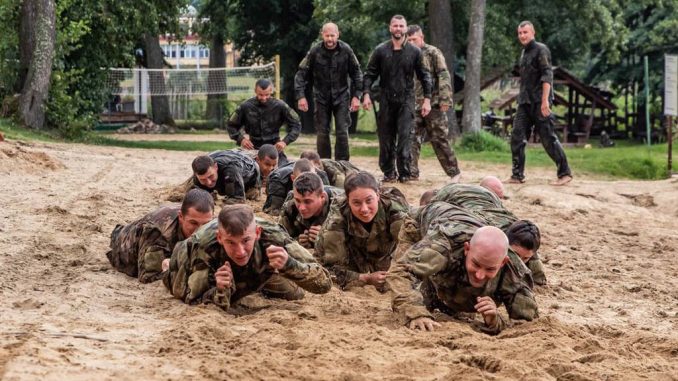
With the Russian invasion of Ukraine expected to last months, thousands of troops deployed in February and March have been extended past their initial 90-day commitments, calling into question how long these deployments will last, and how rotations might continue.
To that end, the National Guard has been discussing the possibility that it’s part-time troops will be called up to fill in, the chief of the National Guard Bureau told Military Times on Monday.
“So we, last week, had a chance to visit with all the adjutants general, and we don’t have any information right now. But as always, we never want to surprise anybody,” Army Gen. Dan Hokanson said. “And so we always try and think of that ― what are those potential possibilities? Because we can always plan, but if we don’t plan, we can’t adjust from there.”
There are roughly 2,000 Guard troops already in Europe, Hokanson said, many of whom already had rotations scheduled before war broke out. One group, from the Florida National Guard, had been training Ukrainian troops in that country and have since relocated to Poland.
“We are working very closely with the Army and the Air Force to identify if there’s going to be rotational plans where the Guard will fit in, so that we can identify those units as soon as possible,” Hokanson said. “The best thing we can ask for is its heads up so we can let the units [know], and they’ll be ready to go whenever they’re asked to head off.”
Guard and Reserve units aren’t part of the conversation right now, a Pentagon spokesman told Military Times on Tuesday, but Defense Secretary Lloyd Austin is reviewing posture levels regularly.
RELATED
:quality(70)/cloudfront-us-east-1.images.arcpublishing.com/mco/FPAHQ2SDWNHXZNLNBOOJ5MM2O4.jpg)
At the end of March, Austin extended deployments for the 82nd Airborne Division, XVIII Airborne Corps and the Truman carrier strike group, and there aren’t currently plans to bring them home to rotate in new units, John Kirby said.
As a result, European force posture in the long-term has come up as a topic for discussion. Multiple Eastern European countries, in addition to U.S. European Command’s boss, have pushed for more permanent basing in the region.
Army Gen. Mark Milley, chairman of the Joint Chiefs of Staff, told lawmakers this month that he envisions building permanent basing with rotational forces, to get the benefit of designated facilities without the heavy lift of providing housing and services to dependents.
More rotations could open up opportunities for Guard units, who have already been deploying to countries like Ukraine and Poland through state partnership programs.
“And I think the message I got from every adjutant general, when they looked at this, is we are all in ― the National Guard is all and to help in any way we can,” Hokanson said.
Meghann Myers is the Pentagon bureau chief at Military Times. She covers operations, policy, personnel, leadership and other issues affecting service members. Follow on Twitter @Meghann_MT



Be the first to comment